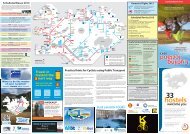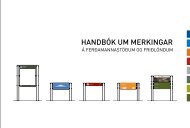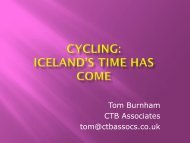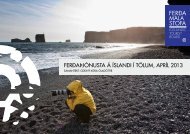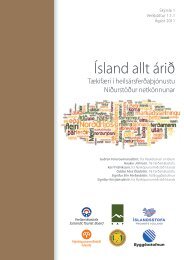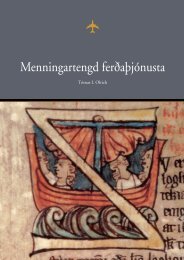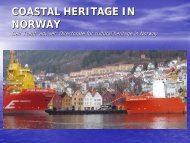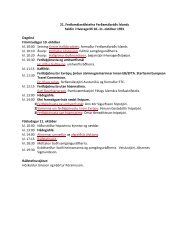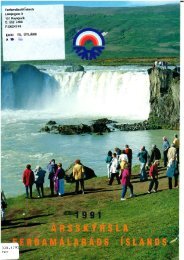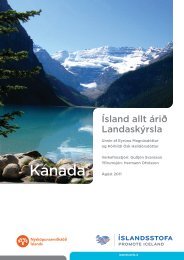Untitled
Untitled
Untitled
Create successful ePaper yourself
Turn your PDF publications into a flip-book with our unique Google optimized e-Paper software.
experience. Practically almost impossible to try or test before purchase, the<br />
tourism product becomes highly dependent upon its de-materialized<br />
appearance in tourism cartographic imaginationing. Unlike Iceland itself,<br />
images of it as a tourist destination are spatially mobile and may be<br />
transported to a tourist generating region. Tourist representations<br />
simultaneously display and erase, reduce and select, just as the cartography<br />
of the tourist imaginationing they want to find a place in. For the tourists,<br />
here and now, then and there, a cartography that is as real as imagined. So<br />
therefore:<br />
Iceland is not a myth, it is actual and real, a solid portion of the earth’s<br />
surface. It is not, either, what every one supposes, nor what we have<br />
reason to believe it is, from its name, its location, and the meager<br />
descriptions we have of it. (Miles 1852, in Boucher 1989, p. 17).<br />
More formally expressed, the territory of the map is not the territory<br />
of its referential other. The cultural product Blue Lagoon may appear in the<br />
“groomed” guise of nature, and it will work as an efficient tourist<br />
destination image because it is unique and therefore not representative of<br />
Iceland. As always, something more is needed than a mere silent spatial<br />
co-ordinate of a location in order to spark off and change the destiny of a<br />
tourist imaginationing, for example; “Energy for life through the forces of<br />
nature” (see image 3.4).<br />
Image 3.4: Blue Lagoon: forces of culture through nature? 24<br />
24 Marketing of the Blue Lagoon in “Map of Iceland, 2008-2009”.<br />
49



